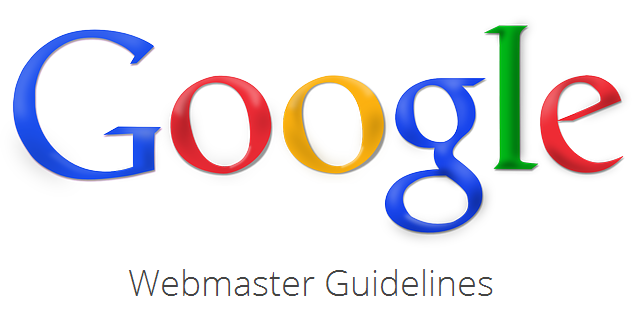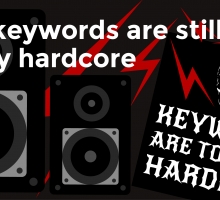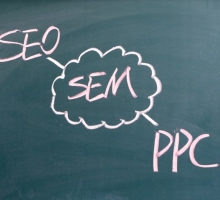With Google punishing the sites of several high-profile brands with penalties recently, we thought now would be a good time to clarify any grey areas when it comes to what is and isn’t acceptable behaviour in Google’s eyes. Of course, many things that are total ‘do nots’ in the world of SEO now, started off a few years ago as easy ‘do’ tactics.
If you’re ever in doubt, it’s best to refer to the Google Webmaster guidelines. Here you’ll find a helpful list of rules from the powers that be, which should help you stay on the straight and narrow and avoid penalties.
To make things extra clear, we’ve outlined some of the old-school SEO techniques that are still catching some people out. And, we’ve even summarised why they are a no-go if you want to stay on the right side of Google and in a good position on the SERPs.
Article submissions
Once upon a time, submitting a keyword rich article to an eZine site was a quick and easy way to create backlinks. Unfortunately, Google wasn’t too keen on the number of spammy articles that started to appear in the name of SEO and here at High Impact, we start the cleansing of a number of link profiles by disavowing or removing many of these links.
Guest posts and networks
 In case you missed it, Google’s Matt Cutts says the guest post is dead and while there is still benefit in collaborating on content in order to increase brand awareness, supplying guest content with the specific aim of acquiring a do-follow link on blogs is a definite no-no. In short, paid do-follow links could get you penalised. Not sure if your current content strategy is wide of the mark? Get in touch and we’ll be happy to give it a once over.
In case you missed it, Google’s Matt Cutts says the guest post is dead and while there is still benefit in collaborating on content in order to increase brand awareness, supplying guest content with the specific aim of acquiring a do-follow link on blogs is a definite no-no. In short, paid do-follow links could get you penalised. Not sure if your current content strategy is wide of the mark? Get in touch and we’ll be happy to give it a once over.
Press releases with manipulated anchor texts
Another much abused tactic is the submission of anchor text heavy press releases to distribution sites. This was done to create backlinks and in the hope of gaining clients exposure, however, neither Google nor journalists will thank you for flooding sites with useless releases that aren’t newsworthy. If you are distributing quality press releases online as part of your PR strategy, we can help you follow best practice and ensure the hard work you are doing isn’t sabotaging your SEO efforts.
Reciprocal linking schemes and exchanges
If you have a genuine relationship with another site or want to refer your users to a great piece of content and information then linking to it makes logical sense. What doesn’t make sense though is the use of reciprocal linking schemes and exchanges. Not only are these obvious and easy to detect – making punishment easy and likely – they also don’t help your user. Your number one priority for a successful SEO strategy should involve placing user experience at the heart of everything you do.
Meta Keywords
Meta keyword stuffing is a very old tactic that is likely to do you more harm than good. Google doesn’t use meta keywords as a ranking factor – though some SEOs still like to include them for Yahoo! and Bing. If you do use them on site, make sure they are relevant to your page and be aware that they can reveal to your competition which terms you are targeting.
Low quality link directories
Low-quality link directories are a by-product of the quick link tactics of early SEO. These sites were purposefully built as a holding space for links. This directories have no place in modern link development; please don’t be tempted to use them as an easy way to gain links as doing so is likely to do harm your site.
Scraped, spun and sparse content
By now, everyone has the message that Google wants sites to have content but that content should be designed to help users and to assist Google in differentiating between sites and pages. If your site uses scraped or spun content, not only do you run the risk of being penalised but you are likely to be breaching copyright too. Remember that the copy on your site serves a purpose for users as well as search engines and consider whether it provides useful information and differentiates your service offering. Duplicate content should always be avoided.
Cloaking
Surprisingly, we do still come across instances of cloaking – the practice of tricking search engines by showing them different content to users. Not only is this incredibly unhelpful to users but it’s likely to lead to your site being removed from search results, so avoid at all costs. To clarify, if you’re using personalised pages as part of your CRO strategy, this doesn’t constitute cloaking- anything that prevents search engines from doing their jobs properly does.
Footer, sitewide links and sponsored themes
Sneaking links into sites for linking purposes was a tried and tested SEO tactic but it’s one that could be hurting your SEO if you have footer or other links pointing back to your site. In the past, people also paid to have ads with links embedded into themes called ‘sponsored’ themes, we strongly advise against this.
Paid blog networks, automated commenting, forum posting and link farms
These are largely variations on the techniques outlined above – the general rule being if a link isn’t natural, it doesn’t help users and is placed in a sneaky manner or on a low quality site, it should be avoided. Unfortunately, these type of links are still being sold to clients as part of monthly ‘link packages’. If you are working with someone who is promising to deliver you X amount of links per month and at a very low cost, you should be suspicious. Building quality links involves building relationships and generating natural coverage and that takes time and money.
What SEO tactics should you be using instead?
Whatever SEO tactics you are using, it’s important to not only consider whether they fall within Google’s guidelines but whether they support your goals and function as a complementary strategy. Not every site or audience is the same, which is why SEO isn’t about taking a tried and tested approach; it’s about building upon good foundations and consistently reviewing a considered strategy. Building backlinks to a site that needs technical work or building bad links to a site in large volumes are common errors we can work with you to correct.
If you’d like to find out more about the strategies and techniques we are using to help our clients improve their online visibility then, get in touch today.
Author: Julian Saunders is the founder of High Impact.
You can find on him on Google + here.







